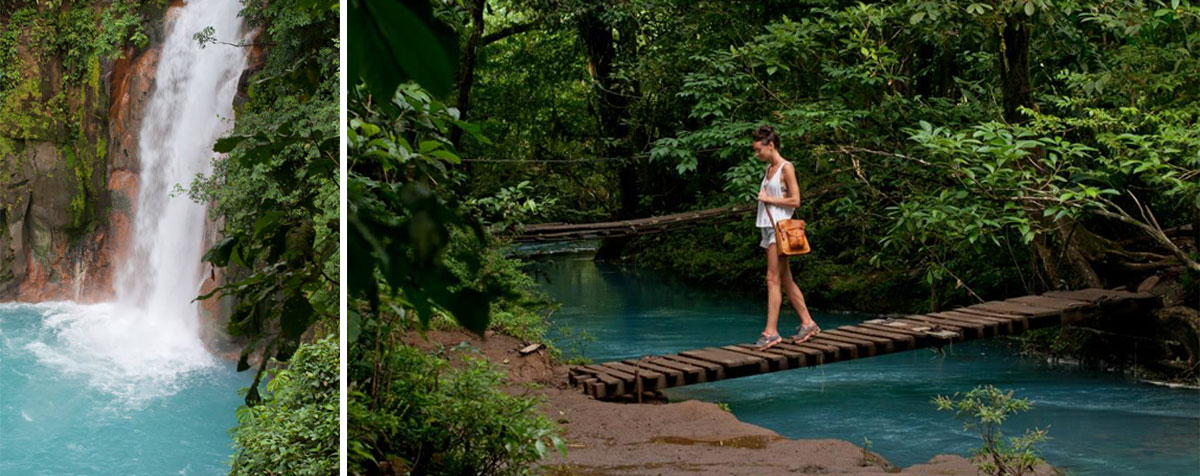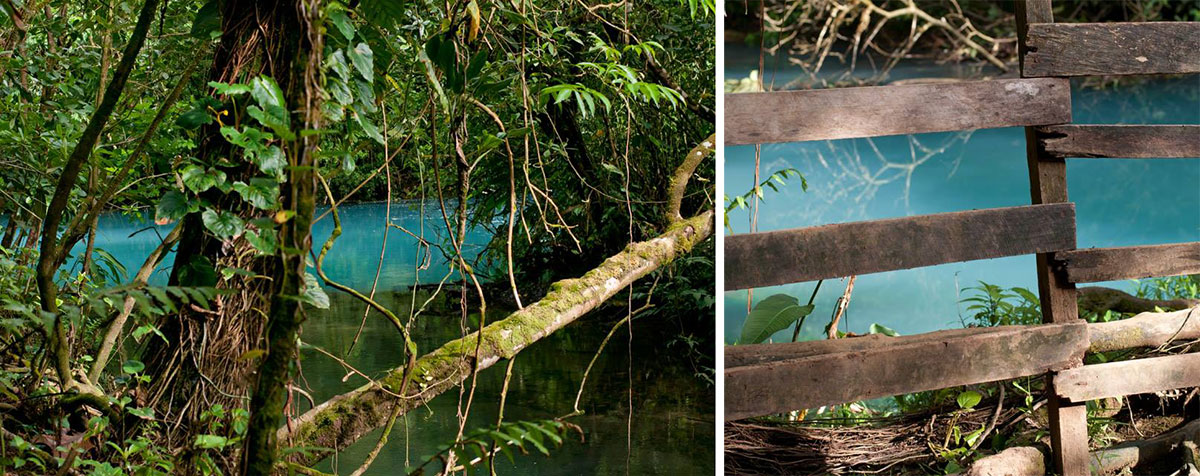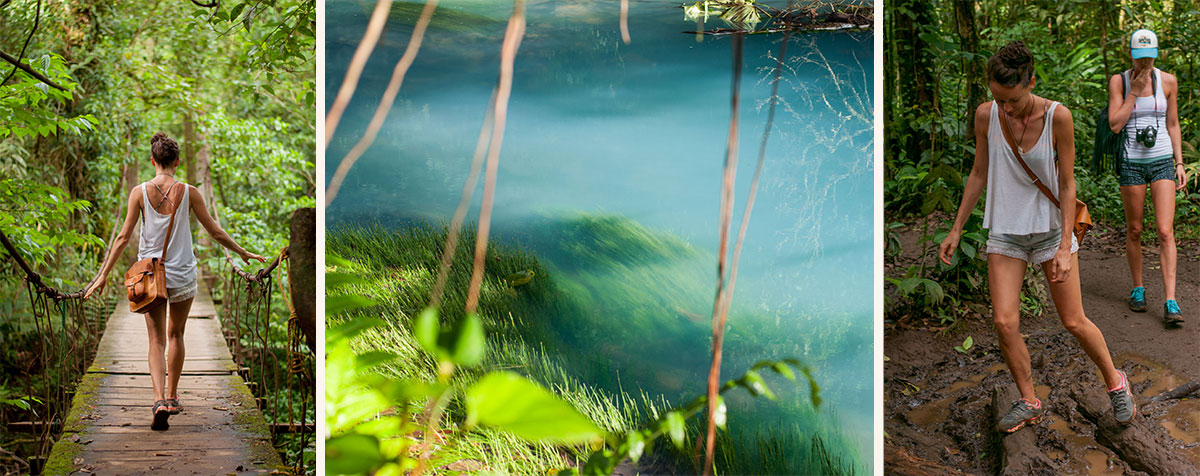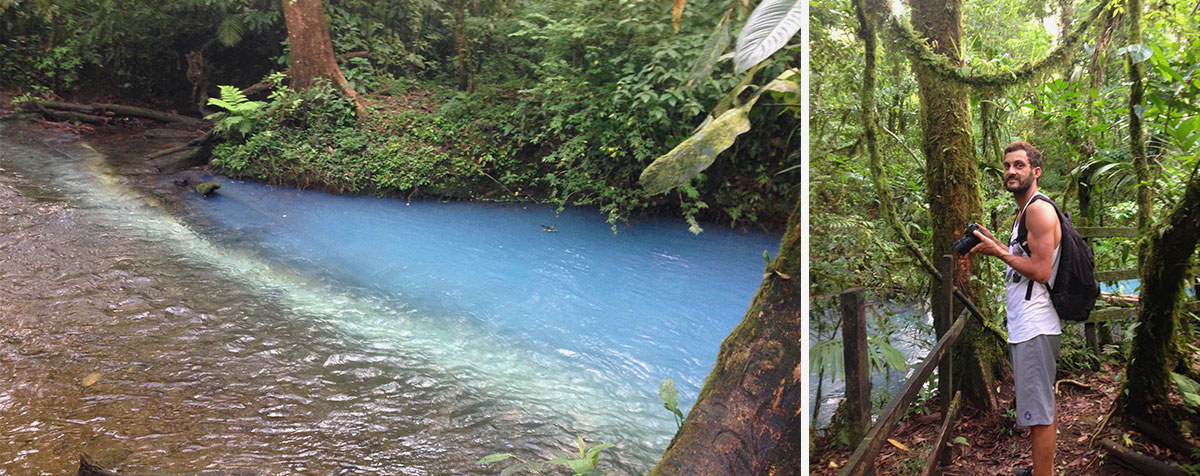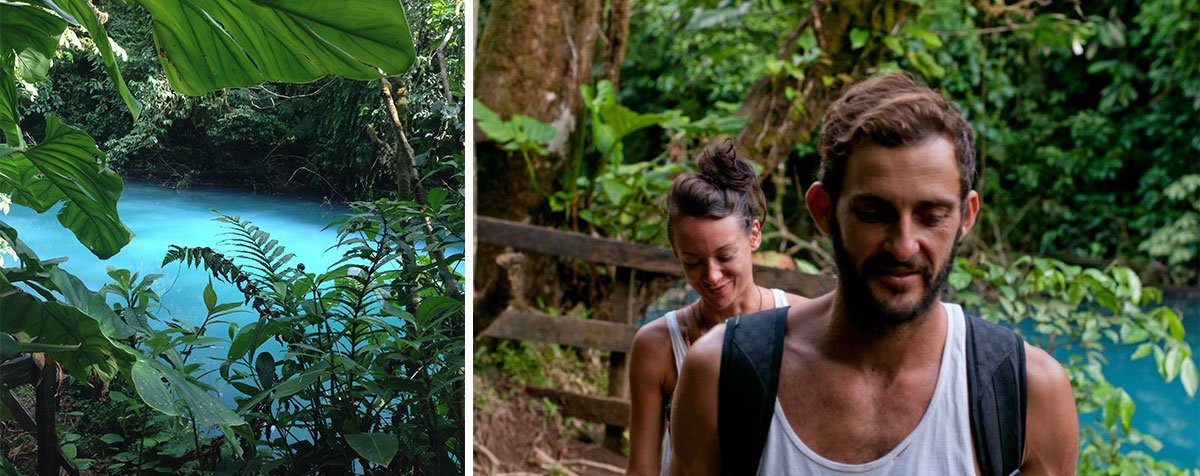Rio Celeste : A Photo Blog
A couple weeks ago we took a road trip to Rio Celeste, the river and waterfall known for its surreal blue color. Rio Celeste is not far from Liberia airport, heading towards Arenal Volcano, in the Tenorio National Park. Most of the drive is on paved roads except for the last stretch after reaching the park entry in Bijagua. From here, four wheel drive is recommended, especially if there is rain, as you’ll be going through some pretty rough patches. Once you reach the trailhead, you hike into the jungle along the path to stop at different points on the river, the first and easiest to reach being the waterfall. There is also a mirador, or lookout point, the Laguna Azul (Blue Lagoon), a few rustic bridges to cross, and the final stop where the two rivers meet that create the blue coloring.
The amazing blue color is due to a type of mineral that is composed of aluminum, silicon and oxygen, and being suspended in the water, which is responsible for reflecting light from the Sun, so that the flow looks blue. These particles in one river join with another river whose acidic environment causes the particles to grow in size upon meeting, and cause this natural phenomenon! You can see in the photos below, where the rivers merge and create different color divides. Pretty amazing stuff! Until very recently (2013) it was not understood by scientists why the coloration occurred, and it was thought to be dangerous to swim in. This is not true, and we saw people taking a dip while we were there (despite some no swimming signs), but we stayed out. There is a very strong sulfur smell at parts of the river that may keep you from wanting to dive in!
Some tips if you decide to do this hike:
- Wear real hiking boots or mud boots if it has rained recently – trail gets pretty slick and there are some deep mud spots. We foolishly wore just sneakers, but were able to go up off the trail for the muddiest sections and make it though. There were guys renting boots at the entrance, and making it sound absolutely necessary, but we smelled a tourist trap and opted to charge with sneakers!
- Pack a lunch or snacks, and water. There is one local soda at the trailhead but not much else in the immediate area until you get back to the town of Bijagua.
- Four wheel drive is recommended, especially if there is rain, as you’ll be going through some pretty rough patches on the last section from Bijagua to the trailhead. It is a bumpy but beautiful dirt road.
- Cost for non-Costa Rican residents is $12, plus a tip to the parking lot attendant. You need to arrive by around 2pm to be able to finish the hike and be out by the time the park closes at 5. We were one of the last groups out, and the parking lot attendant had already left, so don’t leave valuables in your car. (This is a general rule across the board in Central America! It is very easy to open even a locked door without breaking a window, and especially by the beaches this happens regularly. Thankfully it’s easy to avoid by not leaving anything to take.)
It was great to see another part of Costa Rica, and experience a different micro-climate. Costa Rica has over 10 different micro-climates to experience, from the dry regions of the Guanacaste where we live, lush inland hills, deep jungle and humid Carribbean coastline. That’s a lot of diversity for such a small country. As you can see from the photos, this inland area was lush and green!
Enjoy our photo collection below.
